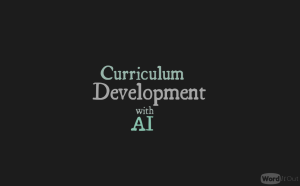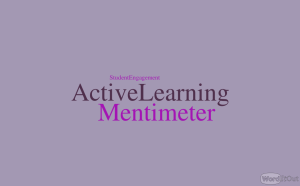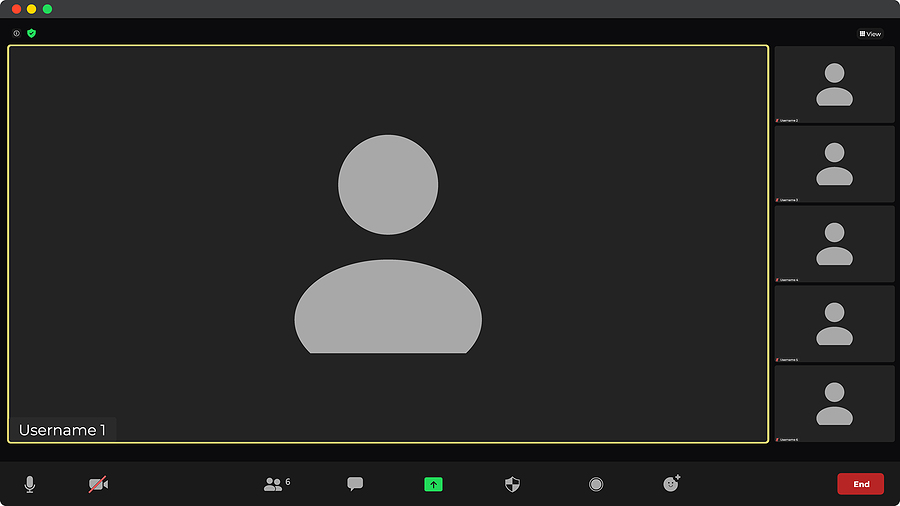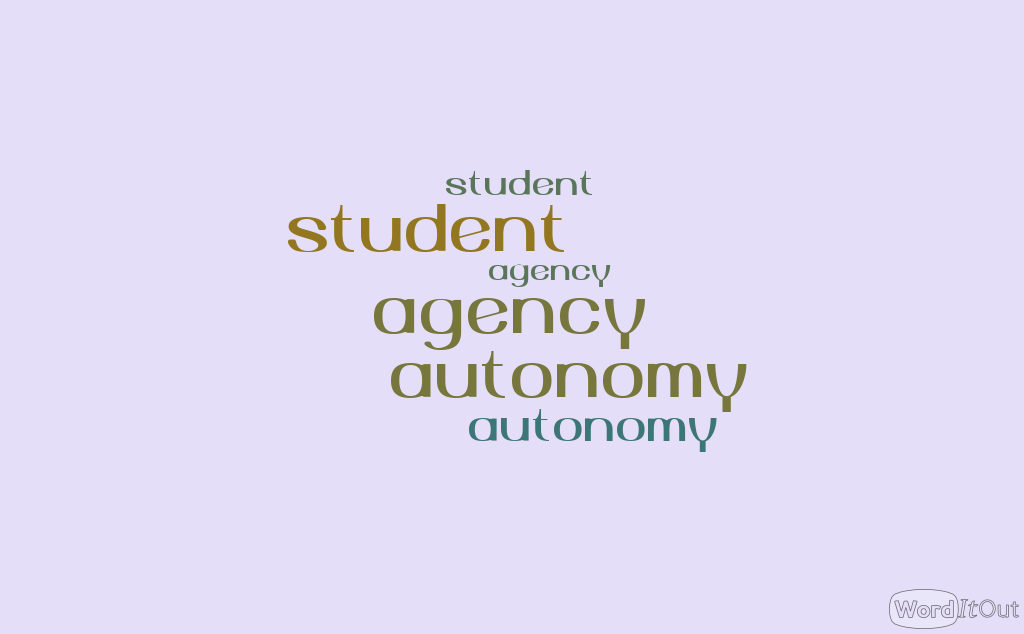 It is the year 2023 and one of the main concerns of our educators is how threatening AI can be to students’ commitment to academic integrity. While these concerns are valid, we, as learning institutions and educators, need more time to navigate through the unknown AI journey. In the meantime, I would like to shed light on a few ways Large Language Models (LLMs) can bring more efficiency to an educator’s life in curriculum development and lesson planning. Continue reading
It is the year 2023 and one of the main concerns of our educators is how threatening AI can be to students’ commitment to academic integrity. While these concerns are valid, we, as learning institutions and educators, need more time to navigate through the unknown AI journey. In the meantime, I would like to shed light on a few ways Large Language Models (LLMs) can bring more efficiency to an educator’s life in curriculum development and lesson planning. Continue reading
All posts by Sherry Hejazi
Active Learning Strategies for Post-Pandemic Zoom Breakout Rooms
Many educators are now familiar with the black screens and mute students on Zoom and its breakout rooms. While having student cameras turned on can certainly have its own merits, the black screens do not necessarily mean that the students cannot or will not contribute. I have found the following three activities helpful in engaging students regardless of having their cameras on or off.
Continue readingActive Learning With Mentimeter
 “Active learning engages students in the process of learning through activities and/or discussion in class, as opposed to passively listening to an expert” (Freeman et al., 2014).
“Active learning engages students in the process of learning through activities and/or discussion in class, as opposed to passively listening to an expert” (Freeman et al., 2014).
One tool that has made active learning more possible in my classes is Mentimeter.
Whether we teach a class in person or we teach an online synchronous course, Mentimeter can accommodate engaging large groups of audiences. If we teach a class implementing Bloom’s Taxonomy approach, Mentimeter can be a great tool in developing a successful and engaging lesson. Continue reading
Building Student Agency and Autonomy
Providing students with various platforms and activities where they can voice their learning helps create an engaging learning environment where students feel autonomous in their learning journey. As Gao (2013) suggests, educators can be involved in their learners’ reflective thinking, where they together assess prioritizing students’ “concerns, desires, and visions” (p.236) and examine further “learning paths” (p.236) in order to promote students’ autonomous language learning.
I’d like to suggest a few ways we can create an environment where students can thrive while strengthening their agency and autonomy:
Continue readingMultimedia English Class with Ted Talks
Teaching research writing and communication courses has been one of the best experiences I have had in my teaching career so far. One of the challenges, however, has been encouraging students to read articles before joining classes. These reading articles are a prerequisite for our students to complete a series of reflective reading and writing practices. Therefore, I have started taking advantage of TED Talks as a not so state-of-the-art, but practical resource for a college communication course. Here are a few ways I use this resource in my classes:
Continue readingVoiceThread in the language classroom
With the new trend in education due to COVID-19, many language classrooms have been moved to hybrid, synchronous, or asynchronous modes of delivery online. This change has certainly impacted the socio-cultural aspects of our classroom dynamics in many different ways.
Approaches to building community and the related language interaction have been impacted by the move to online delivery, and educators have sought assistance by looking into various EdTech tools to make up for this gap. One of these tools that I have found helpful in my language classrooms is VoiceThread.
Making Editing Fun
 Writing is a process, and Díaz Ramírez (2014) gives the steps as follows: “brainstorming, planning, multiple drafting, peer collaboration, delayed editing, and portfolio assessment” (p.34). However, our students perceive writing differently and often skip a few of these steps. Editing is one of these skipped steps.
Writing is a process, and Díaz Ramírez (2014) gives the steps as follows: “brainstorming, planning, multiple drafting, peer collaboration, delayed editing, and portfolio assessment” (p.34). However, our students perceive writing differently and often skip a few of these steps. Editing is one of these skipped steps.
Editing is one of the vital skills I teach in my higher education communication courses. Interestingly, however, when I ask my students how often they edit, the answers I hear are as follows: “sometimes” and “almost never”. Also, when I ask what tools students use to edit their work, they often seem to be unsure of an existing tool. This is when I introduce Track Changes in Microsoft and the Suggesting Mode in Google docs.
Continue readingZooming your Docs

Since late March, many of our courses have been moved online, and synchronous sessions through Zoom have become a new part of our teaching lives. While testing various features offered by Zoom, I have realized that I really miss my classroom whiteboard, which was used for writing the agenda, teaching notes, upcoming coursework, classroom instructions, and conducting student interactive writing, editing, and speaking activities.
Although Zoom has a Whiteboard feature, I find it limiting, so I have replaced it with Google Docs. I have found this practice quite sustainable and a user-friendly approach to an online whiteboard. Here is how and why I combine Zoom and Google Docs.
- Sharing: I have created a Google Doc, named it “Whiteboard” and shared it with my students by placing its link on my Learning Management System (LMS). In every class, my students can click on the same link and find their class notes there.
- Organizing: I have organized my notes on the Google Doc by creating a table of contents, and the table of contents is organized by date of the class, list of planned activities, and by placing the newest notes at the top.
- Navigation: This way of content organization through a table of contents makes navigation absolutely efficient for both students and instructors.
- Agenda: My table of contents also plays the role of an agenda. As an instructor, I place my list of planned activities on the Doc right before the class starts just like when I used to step into my physical classroom welcoming early arrivers and writing my agenda. Now, my table of contents displays my agenda.
- Class Notes: Once the class starts on Zoom, and after I greet my students for a few minutes, I start teaching by sharing my screen and displaying my Google Doc “Whiteboard”. Since my list of activities has already been shared, I ask students to locate a certain activity. When I have my students’ attention on that activity, I can add more teaching notes to it, just as we used to utilize our whiteboards/ blackboards and share information.
- Interaction: Leading a more sedentary lifestyle at this time, it is now more important than ever to create an interactive learning environment for our students, who might be staring at screens for long hours every day. Therefore, for every assignment, I have a short teaching moment, and then ask my students to work on the activity.
- Watching: In the case of showing a video, I place the video link right in front of the planned activity, which has two benefits: It is quick for the instructor to locate the video link and play it right there, and it is already shared with my students for their own future reference.
- Reading: The same goes for sharing an article and having students read it. With Zoom’s Breakout Room feature, it is easy to place students in different groups to read and speak about an article. I can assign certain paragraphs to each group, or I can assign a different article to every group. Having all the links shared on one page for the whole semester makes navigating content a highly efficient practice. A little side note: I also use the Zoom’s chat box or the broadcast feature to share a quick spontaneous link or a message when conducting breakout rooms.
- Writing: In terms of writing, I can follow the same practice of assigning a page to a breakout room group, where students can write and edit their work. I am writing a whole blog post on writing and editing, coming up soon.
- Announcements: Finally, I share reminders, coursework due dates, and announcements right at the top of every class’s list of activities, which makes it easy for students to plan upcoming activities and assignments.
This combination of Zoom sessions with a consistent Google Doc link has been a well-received practice with my students. By placing your whole class on a Google Doc, teaching, learning, note sharing, and storing have become sustainable, organized, and efficient. I highly recommend it to all the educators out there who are trying to make their lives and their students’ lives easier, stay efficient, and make learning more accessible.
Effective Strategies for Distance Teaching

It is the third week of social distancing in 2020, and I am constantly amazed and overwhelmed by the number of best practices being shared by colleagues and other educators. It is 2020 and the number of platforms to learn from and to share information about is just too many. Even so, I thought it might be a great time for me to share some of the best practices I have learned for effective online teaching strategies with my TESL community.
Many of us teaching at Ontario colleges were given a week to transfer our courses to distance learning. Keeping in mind that one week is definitely not enough time to learn and plan to teach from a distance, here are a few strategies that I follow while planning my courses.
Continue readingReading & Presenting Circles

Teaching communication skills to internationally trained professional students has been one of the most rewarding experiences of my teaching career. My students have years of experience and vast knowledge in their areas of expertise, yet when it comes to communicating the simplest thoughts and ideas, they often seem to be challenged; confidence and language barriers could be the two biggest reasons behind this challenge.
The curriculum that I teach requires students to present only twice over the span of 4 months. This semester, however, I have started providing my students with more opportunities to present without making it an official presentation task. I have named this approach “Reading & Presenting Circles.” The results have been stellar, so I thought I should share the approach with my TESL Blog community. The class I have implemented the Reading and Presenting Circle approach in is 18 weeks, and I meet my students twice a week.
Continue reading



